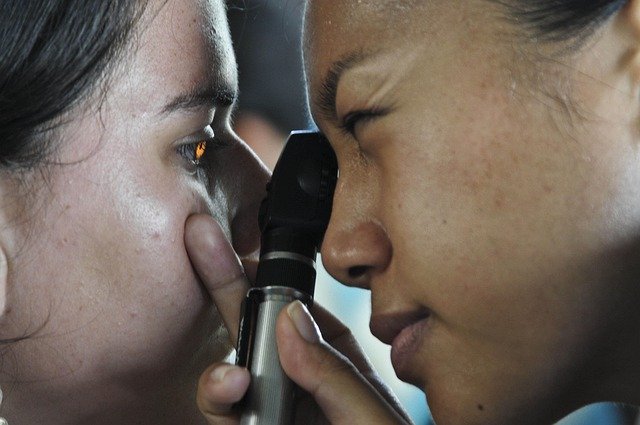Recognizing Amyloidosis Warning Signs Before They Become Serious
Amyloidosis can progress rapidly if undetected, making early recognition crucial. This guide helps identify early symptoms and take timely action to manage the condition effectively. Understanding and awareness of amyloidosis are key to addressing its impact on health, aiding both patients and caregivers in advocating for necessary diagnosis and treatment.

What is Amyloidosis and Why is Early Detection Important?
Amyloidosis occurs when abnormal proteins called amyloids build up in various organs and tissues throughout the body. This accumulation can interfere with normal organ function, leading to a range of health issues. Early detection is vital because amyloidosis can progress rapidly if left untreated. Recognizing the first symptoms of amyloidosis, particularly ATTR amyloidosis (a specific type), can make a significant difference in treatment outcomes and quality of life.
What Are the Earliest Signals of Amyloidosis in Seniors?
Seniors are at higher risk for certain types of amyloidosis, making it crucial to be aware of the earliest signals. These may include:
-
Unexplained fatigue or weakness
-
Shortness of breath, especially during physical activity
-
Swelling in the ankles and legs (edema)
-
Numbness or tingling in hands and feet
-
Unintentional weight loss
-
Difficulty swallowing
It’s important to note that these symptoms can be subtle and easily mistaken for signs of aging. However, if multiple symptoms persist or worsen, it’s essential to consult a healthcare professional.
How Can You Recognize the First Symptoms of ATTR Amyloidosis?
ATTR amyloidosis is a specific form of the condition that affects the heart, nerves, and other organs. The first symptoms of ATTR amyloidosis may include:
-
Carpal tunnel syndrome (often bilateral)
-
Heart palpitations or irregular heartbeat
-
Decreased sensation in extremities
-
Gastrointestinal issues like diarrhea or constipation
-
Dizziness or fainting, especially when standing up
-
Blurred vision or eye problems
These symptoms may appear gradually and worsen over time. Early recognition and proper diagnosis are crucial for managing ATTR amyloidosis effectively.
Is it Amyloidosis? How to Identify Symptoms and Explore Treatment Options
Identifying amyloidosis can be challenging due to its diverse symptoms. If you suspect amyloidosis, consider the following steps:
-
Document your symptoms: Keep a detailed record of when symptoms occur and their severity.
-
Consult a specialist: Seek evaluation from a hematologist, cardiologist, or neurologist familiar with amyloidosis.
-
Undergo appropriate testing: This may include blood and urine tests, imaging studies, and possibly a tissue biopsy.
-
Discuss treatment options: If diagnosed, explore treatments such as chemotherapy, organ transplantation, or targeted therapies depending on the type and severity of amyloidosis.
Remember, early diagnosis often leads to better treatment outcomes and improved quality of life.
What is the Connection Between Amyloidosis and Crohn’s Disease?
The intersection of amyloidosis and Crohn’s disease is an important area of study in the medical community. Some key points to understand include:
-
Increased risk: People with Crohn’s disease have a higher risk of developing secondary amyloidosis.
-
Chronic inflammation: Long-term inflammation associated with Crohn’s disease can lead to the production of abnormal proteins that cause amyloidosis.
-
Overlapping symptoms: Both conditions can cause gastrointestinal issues, making diagnosis challenging.
-
Treatment implications: Managing Crohn’s disease effectively may help reduce the risk of developing amyloidosis.
-
Regular monitoring: Patients with Crohn’s disease should be regularly screened for signs of amyloidosis.
Understanding this connection can help patients and healthcare providers take a proactive approach to monitoring and treatment.
How Does Early Recognition Impact Amyloidosis Treatment and Prognosis?
Early recognition of amyloidosis can significantly impact treatment effectiveness and overall prognosis. Here’s why it matters:
-
Timely intervention: Early detection allows for prompt initiation of appropriate treatments.
-
Organ preservation: Catching the disease early can help prevent or minimize organ damage.
-
Improved quality of life: Early treatment can help manage symptoms and maintain functionality.
-
Better treatment options: Some newer therapies are more effective when started in the early stages of the disease.
-
Increased survival rates: Early diagnosis and treatment can lead to improved long-term outcomes.
-
Personalized care: Recognizing the specific type of amyloidosis early allows for more targeted treatment approaches.
While there is no cure for amyloidosis, early recognition and proper management can significantly improve a patient’s prognosis and quality of life.
In conclusion, understanding the warning signs of amyloidosis and seeking timely medical attention are crucial steps in managing this complex condition. By being aware of the earliest signals, particularly in high-risk groups like seniors, and recognizing the potential connection with other conditions such as Crohn’s disease, individuals can take proactive steps towards early diagnosis and effective treatment. Remember, if you suspect amyloidosis or experience persistent, unexplained symptoms, consult with a healthcare professional promptly.
This article is for informational purposes only and should not be considered medical advice. Please consult a qualified healthcare professional for personalized guidance and treatment.




